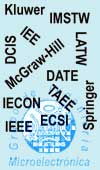
Mapa Web

Localización

Noticias

Info Santander

Gestión BD

|
| GIM>Investigación>Publicación |
| PUBLICACION |
| |
| Ficha completa |
| Título: | Positioning System for Recreated Reality Applications based on high performance Video-Processing |
| Tipo: | Capitulo de libro |
| Lugar: | in A. Molnos, C. Fabre (Eds.):"Model-Implementation Fidelity in Cyber Physical System Design", pp.201-230, Springer |
| Fecha: | 2016-12 |
| Autores: |
Eugenio Villar
Patricia Martínez
|
| Líneas: |
Diseño y verificación de sistemas embebidos HW/SW
|
| Proyectos: |
Artemis 332913 COPCAMS – Cognitive & Perceptive CAMeraS
|
| ISBN: | 9783319473062 |
| Fichero: |
|
| Resumen: | The continuous evolution of fabrication technologies has enabled the development of more complex and powerful embedded systems. A related tendency is toward an increasing percentage of the functionality being executed as embedded SW running on the different processors of the Multi-Processing System-on-Chip (MPSoC). In order to reduce the design gap (between design complexity and design productivity) associated with this evolution, the trend is to increase the level of abstraction at which designers and CAD tools work. To deal with this problem, starting the design process from high-level UML models combined with functional codes using (i.e. using C/C++) of the different system components has been proposed. Video processing is one of the areas where high-level modeling and analysis based on UML may have a wider impact.
In this book chapter, Model-driven development (MDD) using UML/MARTE is proposed to support the specification and analysis of a positioning system for recreated reality applications. By recreated reality, we mean to provide the user with an immersive experience based on synthetic, 3D images combining virtual and real images of the environment where the user is. In this applications, a positioning system able to know where the user is in each instant of time is an essential piece.
chapter |
|
|








